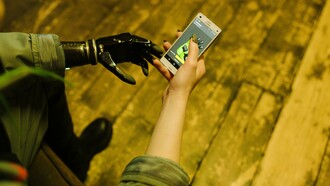While working on seaweed aquaculture in Venezuela during 1992, our advisor was a British biologist named Chris Dawes. By the end of that year, he and my boss mentioned the possibility to do a Master of Science at the Universidad de Las Palmas in Gran Canarias, Spain. Besides, the postgraduate thesis could be done at the University of Liverpool in the United Kingdom.
The company for which I worked, Geles del Caribe (Gelca), was a branch of Polar Enterprises, and they would pay my studies, including my travel expenses. So, why not to take this wonderful opportunity? I fixed all my documents, and prepared to go there by September 1993, flying with VIASA in a DC10 to Tenerife, and from there to Las Palmas. The classes were taken in Taliarte near Telde, the second-largest city in Las Palmas Island, the university has a phycology laboratory, where seaweeds and microalgae were studied for developing products based on those organisms.
We dealt with basic theoretical aspects of algae, like taxonomy, physiology, ecology and genetics, during the first trimester. We had professors from all over the world. I particularly remember a Georgian, Dr. Zakir Ramazanov, he was an expert in biochemistry and physiology. He spoke perfect English and Spanish as well. He was very friendly, so we learned from him that he used to be a boxer and also a veteran during the Soviet intervention in Afghanistan in the 80s. His academic and technological life was amazing, easy to spot on the Internet. Sadly, he died in 2007. I might go back to him in a future article.
Other professors were from France, Sweden, Chile, Spain, UK and the USA. Most students were from Europe specially Portugal, Norway, Finland, and of course Spain. However, there was a bunch of Latin-Americans from Mexico, Argentina, Colombia, Chile and Venezuela.
We lived close to the laboratory, almost a walk of about one kilometer along the sea front. The Canarian weather was gentle, sunny and fresh. People were nice and more cheerful with the Spanish speakers. After classes or during the weekends you could take the bus to Telde, a beautiful town with large markets, shops, all the services, and places for leisure. I especially remember a few tascas (Spanish pubs), concert halls, dancing places with pazo doble and merengue, even Jazz clubs.
Beaches near the lab are of black sand due to volcanic dust. The water is colder than in the Caribbean Sea, however it is possible to swim for a while. If you travel south of Las Palmas you will find Maspalomas, a more typical sandy beach. The center of the island is hilly.
After my first trimester, I returned to Caracas in December, enjoyed Christmas and New Year's eve 1994 with my family. Worked in Sucre State from January until March when notification to return to Europe was granted. Before my flight to the UK, I had to gather some seaweed samples from Margarita Island which only grew in January, and then took it alive to the University of Liverpool to culture in the Marine Biology laboratory of the Isle of Man in the Irish Sea.
I flew in April, and I remember I took a B747 of British Airways directly to London-Heathrow airport, then to Belfast, waiting a night for my final flight to Douglas in the Isle of Man. The laboratory is in Port Erin, a pretty angler village oriented to Ireland, the marine lab has more than a hundred years, however was updated during the 90s. I contacted some friends of Dr. Dawes, and started to plan my essays on the culture facilities.
Life in Man was very quiet; nevertheless, during the summer days, daylight hours were long, lasting until 8 pm, pubs on weekends are great with friendly people, diving in such cold waters will require dry suits but overall, it is an amazing experience. Motorbike Race, old trains surround the island, and basking sharks approach the coast, which allows you to see these gentle giants. People speak in very elegant English and a few more can talk in Gaelic or even Manx.
When I finished my postgraduate project, I returned to Gran Canaria via sea cat ferries and trains to Madrid, then a flight to Las Palmas. Before reaching the Canary Islands, I spent two weeks between London, Paris and the capital of Spain.
The final subjects in October and November dealt with the application and technologies of algae science. I greatly remember Professor Van Staaden from the University of Nathal in South Africa who provided us with knowledge about the sustainable use of the brown seaweed Ecklonia maxima to produce an aqueous fertilizer. However, can be even used to develop new medicines, cosmetics and food.
In early December 1994, I received my Master degree in Telde, and remember how Dr. Zakir enjoyed that with us. A few days later I returned to Venezuela.















